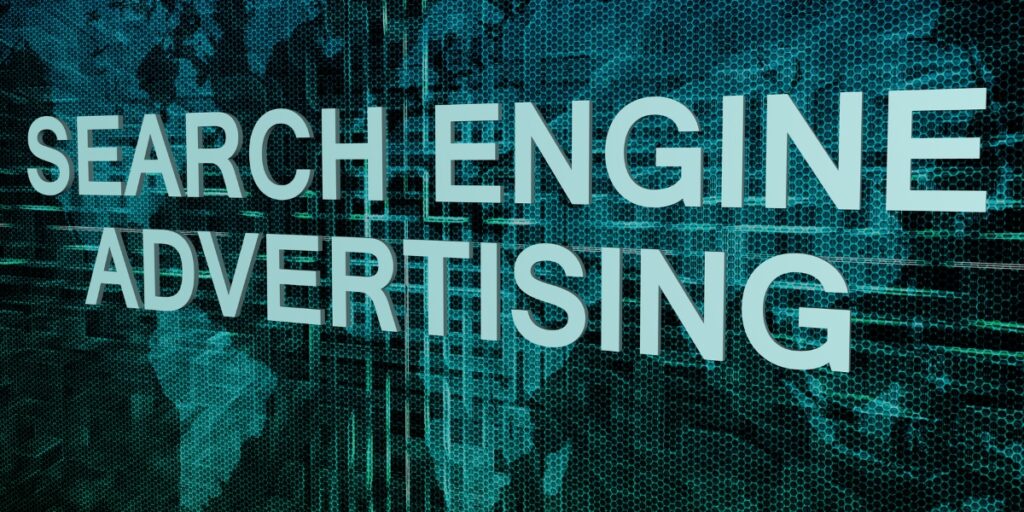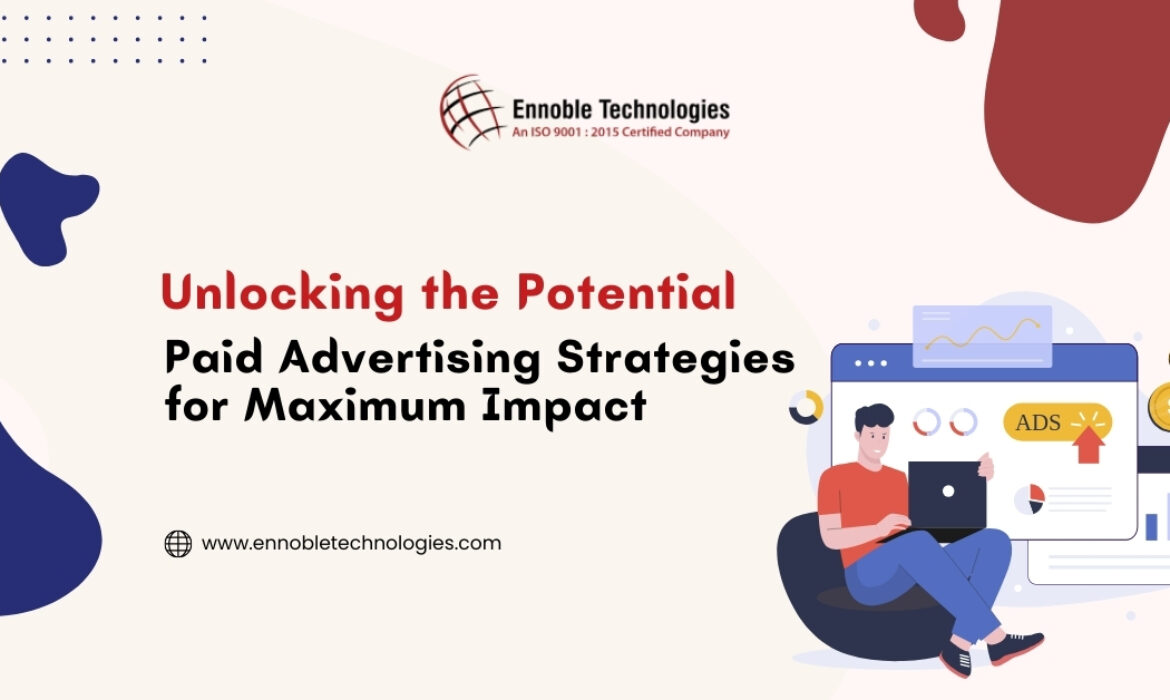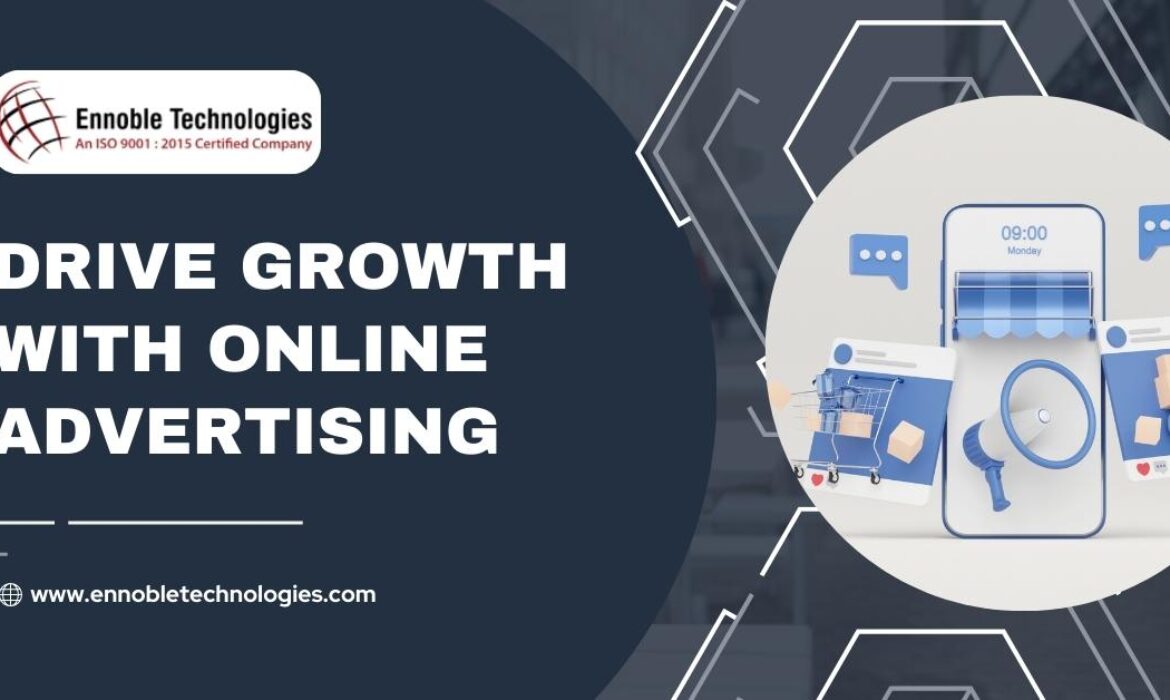Unlocking the Potential: Paid Advertising Strategies for Maximum Impact
Understanding the Power of Paid Advertising
Paid advertising has become an indispensable tool in the digital marketing landscape. It’s a strategic approach that enables businesses to reach their target audience effectively, garnering immediate visibility and engagement. When executed correctly, paid advertising can yield substantial returns on investment (ROI) and significantly impact brand growth.
The Evolving Dynamics of Paid Advertising
In recent years, the realm of paid advertising has witnessed a remarkable evolution. Platforms like Google Ads, social media channels (such as Facebook, Instagram, and LinkedIn), and other digital networks have provided diverse and sophisticated avenues for businesses to promote their products or services. With each platform offering distinct ad formats and targeting options, crafting a tailored strategy for maximum impact has become both an art and a science.

Crafting a Comprehensive Paid Advertising Strategy
- Defining Clear Objectives: Establishing precise goals is the cornerstone of any successful paid advertising campaign. Whether it’s driving website traffic, boosting sales, or enhancing brand awareness, clarity in objectives guides the entire strategy.
- Audience Segmentation and Targeting: Understanding your audience demographics, behaviors, and preferences is pivotal. Leveraging this insight allows precise targeting, ensuring your ads reach those most likely to convert.
- Ad Content and Creatives: Compelling ad content that resonates with the audience is paramount. Utilize persuasive copy, captivating visuals, and engaging CTAs (Call to Actions) to drive user action.
- Optimizing Landing Pages: Ensure that the landing pages your ads direct to are aligned with the ad content and offer a seamless user experience. Optimized landing pages increase conversion rates.
- Monitoring and Analysis: Continuous monitoring and analysis of ad performance provide invaluable insights. Metrics like click-through rates (CTR), conversion rates, and cost per acquisition (CPA) should guide ongoing refinements.
Benefits of a Well-Crafted Paid Advertising Strategy
A strategically devised paid advertising campaign presents a multitude of benefits for businesses:
- Immediate Visibility: Unlike organic methods, paid advertising delivers immediate visibility to the target audience, expediting brand recognition and exposure.
- Precise Targeting: Detailed audience segmentation enables precise targeting, ensuring that ads are shown to those most likely to convert, optimizing ad spend.
- Measurable ROI: With robust analytics tools, measuring the effectiveness of paid campaigns is precise. This data-driven approach allows for continuous refinement and improvement.
- Enhanced Brand Awareness: Consistent visibility across platforms aids in strengthening brand awareness and recall among the audience.
Key Takeaways
Crafting an effective paid advertising strategy involves a meticulous blend of data analysis, creativity, and continuous optimization. Understanding your audience, setting clear objectives, crafting compelling content, and vigilant monitoring are vital components that contribute to maximum impact.
Harnessing the Potential of Google Ads
Google Ads stands tall among the diverse platforms available for paid advertising. Its expansive reach and diverse ad formats make it a powerhouse for businesses aiming to amplify their online presence.

Ad Types and Customization
Google Ads offers various ad types tailored to different business goals:
- Search Ads: Displayed at the top of search engine result pages, these ads target users actively searching for specific keywords.
- Display Ads: These visually appealing ads appear across the Google Display Network, spanning a wide array of websites and apps.
- Video Ads: Capitalize on the popularity of YouTube and engage users through compelling video content.
- Shopping Ads: Ideal for e-commerce, these showcase product images, prices, and businesses’ names right at the top of Google searches.
Customization within Google Ads allows for precise targeting, scheduling, and budget allocation. Leveraging features like location targeting, ad extensions, and remarketing can significantly enhance ad performance.
Maximizing Social Media Platforms
The landscape of social media platforms offers a diverse range of opportunities for paid advertising:
- Facebook Ads: With its extensive user base and detailed targeting options, Facebook Ads enable businesses to reach specific demographics effectively.
- Instagram Ads: Leveraging visually engaging content, Instagram Ads tap into the platform’s highly visual nature, capturing user attention.
- LinkedIn Ads: Ideal for B2B marketing, LinkedIn Ads offer precise targeting options based on job titles, industries, and professional demographics.
Each social media platform provides unique ad formats and targeting options. Crafting tailored ad campaigns optimized for each platform maximizes audience engagement.
Budget Allocation and Optimization
A crucial aspect of paid advertising lies in effective budget allocation and continuous optimization. Distributing budgets across different platforms and ad types based on performance analysis is key. Constantly testing ad variations, refining targeting parameters, and optimizing landing pages contribute to maximizing ROI.
Understanding Your Audience: Key to Success
Before diving into any advertising venture, comprehending your audience is pivotal. Conduct thorough research to identify their demographics, preferences, and behaviors. Utilize analytics tools to glean insights and craft targeted campaigns that resonate with your audience’s needs and interests. Aligning your message with their desires enhances engagement and conversion rates.
Crafting Compelling Ad Copies
Captivating ad copies play a crucial role in capturing audience attention. Craft compelling, concise, and persuasive copies that highlight your unique value proposition. Incorporate relevant keywords naturally to boost search visibility and entice potential customers. A clear and compelling call-to-action (CTA) prompts users to take the desired action, driving conversions.

Harnessing the Power of Visuals
In the realm of paid advertising, visuals wield immense influence. Utilize captivating images, videos, or infographics that complement your message. Visual content not only grabs attention swiftly but also enhances comprehension and retention. Ensure consistency in branding across visual elements to reinforce brand identity and foster trust.
Strategic Bid Management and Budget Allocation
Optimizing bids and allocating budgets strategically can significantly impact your campaign’s performance. Employ data-driven insights to adjust bids based on ad performance, ensuring maximum ROI. Allocate budgets wisely across platforms and campaigns, focusing on high-performing channels to maximize impact.
A/B Testing for Continuous Improvement
Continuous refinement is key to sustained success in paid advertising. Implement A/B tests to experiment with various elements such as headlines, visuals, or CTAs. Analyze the results meticulously to identify the most effective components and iterate for ongoing improvement.

Embracing Diverse Advertising Platforms
Diversifying your advertising platforms mitigates risk and expands your reach. Explore diverse platforms like Google Ads, social media ads, or native advertising to tap into varied audience segments. Tailor your approach based on platform-specific nuances to optimize results.
Tracking and Analyzing Performance Metrics
Monitoring and analyzing performance metrics are fundamental to refining your strategies. Track key metrics such as click-through rates, conversion rates, and return on ad spend (ROAS). Use these insights to fine-tune your campaigns, emphasizing high-performing aspects for optimal results.
Conclusion
Mastering paid advertising strategies demands a blend of creativity, data-driven insights, and continuous optimization. By understanding your audience, crafting compelling content, leveraging visuals, and refining strategies based on data analysis, you can propel your advertising campaigns to new heights of success. Embrace experimentation, adapt to changes, and stay abreast of industry trends to stay ahead in the competitive landscape of paid advertising.
Also Read: A/B Testing: Fine-Tune Your Ads for Optimal Results – Ennoble Technologies
Drive Growth E-commerce with Online Advertising: A Comprehensive Guide
Introduction
In today’s digital age, the world of e-commerce offers immense potential for businesses to expand their reach and boost revenue. One of the most powerful tools at your disposal is online advertising. By strategically leveraging online advertising, you can drive growth in your e-commerce venture like never before. This comprehensive guide will walk you through the ins and outs of utilizing online advertising to supercharge your e-commerce growth.
Drive Growth E-commerce with Online Advertising

Online advertising has transformed the way businesses connect with their target audiences. It allows you to reach potential customers across various online platforms, creating brand awareness, driving traffic, and ultimately boosting sales. By aligning your advertising efforts with your business goals, you can achieve remarkable results.
The Power of Online Advertising in E-commerce

In a highly competitive e-commerce landscape, online advertising offers a competitive edge. It enables you to tap into the vast online user base and showcase your products or services to the right people at the right time. This targeted approach significantly increases your chances of conversion and growth. We delve into the myriad ways you can leverage online advertising to drive e-commerce growth.
1. Understanding Target Demographics
To create a successful online advertising campaign, we first need to have a deep understanding of our target demographics. Recognizing their preferences, buying habits, and online behaviors provides invaluable insights. Armed with this information, we can tailor our advertisements to resonate more deeply, increasing the likelihood of conversion.
2. Embracing Multiple Advertising Platforms
While many e-commerce businesses might be tempted to stick with tried and true platforms like Google AdWords, we advise diversifying advertising efforts. Platforms like Facebook, Instagram, Pinterest, and even TikTok offer unique opportunities to reach different segments of your target audience. By embracing multiple platforms, we can cast a wider net and pull in a more varied customer base.
3. Prioritizing Mobile-First Advertising
With a significant chunk of online shopping happening on mobile devices, we must prioritize mobile-first advertising strategies. This involves optimizing ads for mobile screens, ensuring speedy page load times, and simplifying the checkout process for mobile users.
4. Leveraging Retargeting Strategies
Ever wondered why a product you viewed on a website seems to follow you around on other platforms? That’s retargeting in action. By using retargeting strategies, we can remind potential customers of products they’ve shown interest in, nudging them closer to a purchase.
5. Utilizing Video Content
Video content is not just for entertainment. We’ve seen a marked increase in conversion rates for e-commerce businesses that employ video ads. Demonstrating product use, showing it in action, or illustrating its benefits through video can be much more effective than static images.
6. Integrating Seamless Checkout Processes
Once a potential customer clicks on our ad, half the battle is won. But to convert this interest into a sale, we need to ensure that our checkout processes are as seamless as possible. Streamlined, easy-to-navigate, and secure checkouts boost consumer confidence and increase conversion rates.
7. Analyzing and Adapting
The digital landscape is always changing. What works today might not necessarily work tomorrow. As such, we need to be in a constant state of analysis and adaptation. By monitoring our online advertising campaigns closely, we can quickly pivot and adjust our strategies based on real-time data.
8. Creating Value Propositions
While it might be tempting to rely solely on discounts or sales to drive traffic, we believe in the power of value propositions. Offering unique selling points, exclusive content, or value-added services can make our e-commerce platform stand out in a sea of competitors.
9. Ensuring Transparency and Authenticity
In an age where consumers are more discerning than ever, transparency and authenticity go a long way. By being open about our business practices, showcasing real reviews, and interacting genuinely with customers, we can build trust. And trust, in the realm of e-commerce, translates to loyalty and repeat business.
Types of Online Advertising for E-commerce

1. Search Engine Advertising: Utilize platforms like Google Ads to display your products or services prominently when users search for relevant keywords. This ensures your offerings are visible to potential customers actively looking for what you offer.
2. Social Media Advertising: Leverage the massive user bases of platforms like Facebook, Instagram, and Twitter to showcase your products through engaging visual content. Precise audience targeting options allow you to reach users based on demographics, interests, and behaviors.
3. Display Advertising: Display ads on websites and apps that your target audience frequents. These ads come in various formats, from banners to videos, grabbing users’ attention and directing them to your e-commerce site.
4. Influencer Collaborations: Partner with influencers in your industry to promote your products. Their authentic endorsements can build trust among their followers and drive traffic to your ecommerce store.
Crafting Compelling Ad Campaigns
Creating effective online ad campaigns requires a blend of creativity, strategy, and data analysis.
Utilizing LSI Keywords for Ad Copy
Incorporate Latent Semantic Indexing (LSI) keywords into your ad copy. LSI keywords are contextually related terms that enhance your ad’s relevance, making it more likely to appear in relevant searches.
Engaging Visuals and Copywriting
Captivating visuals paired with persuasive copy can make your ads stand out. Highlight the unique value propositions of your products, addressing pain points and offering solutions.
A/B Testing for Optimization
Regularly conduct A/B tests on different ad elements such as headlines, images, and calls-to-action. This data-driven approach helps you identify the most effective components and refine your campaigns for better results.
Enhancing User Experience on Your E-commerce Site
A successful ad campaign is only part of the equation. Ensuring a seamless user experience on your e-commerce website is crucial for converting ad clicks into sales.
Mobile-Friendly Design
Optimize your website for mobile devices to accommodate the growing number of mobile users. A responsive design ensures a smooth experience regardless of the device used.
Clear Navigation and Product Information
Simplify site navigation and provide comprehensive product information. Users should easily find what they’re looking for and make informed purchase decisions.
Leveraging Data Analytics for Continuous Improvement
Data-driven decision-making is key to refining your online advertising strategies and achieving sustained growth.
Monitoring Key Metrics
Regularly monitor metrics such as click-through rates, conversion rates, and return on ad spend. These insights help you identify which campaigns are performing well and where adjustments are needed.
Retargeting and Remarketing
Implement retargeting campaigns to re-engage users who visited your site but didn’t complete a purchase. Remarketing ads can remind them of their interest and nudge them towards conversion.
Scaling Successful Campaigns
Identify campaigns that consistently deliver positive results and consider scaling them. Increasing your investment in high-performing campaigns can lead to exponential growth.
FAQs about Driving E-commerce Growth through Online Advertising

Q: How quickly can I expect to see results from my online advertising efforts?
A: Results can vary depending on factors like your industry, budget, and campaign strategy. However, with effective targeting and optimization, you can start seeing noticeable improvements within a few weeks.
Q: What’s the ideal budget for an e-commerce online advertising campaign?
A: There’s no one-size-fits-all answer. Your budget should align with your goals and the competitiveness of your industry. Start with a manageable budget and increase it as you see positive returns.
Q: How can I ensure my ads resonate with my target audience?
A: Conduct thorough audience research to understand their preferences, pain points, and behaviors. Craft ad content that speaks directly to their needs and aspirations.
Q: Are there any pitfalls to avoid in e-commerce online advertising?
A: Avoid overselling and using misleading clickbait. Transparency and authenticity build trust with your audience and lead to sustainable growth.
Q: Can I handle online advertising on my own, or should I hire a professional?
A: While managing your own campaigns is possible, enlisting the help of professionals can save you time and potentially yield better results. Their expertise can help you navigate the intricacies of online advertising.
Q: What’s the role of storytelling in online advertising for e-commerce?
A: Storytelling humanizes your brand and creates an emotional connection with your audience. Sharing stories about your products, brand journey, or satisfied customers can set you apart from competitors.
Conclusion
Online advertising has become a cornerstone of e-commerce growth. By understanding the various strategies, optimizing your campaigns, and delivering exceptional user experiences, you can harness its power to drive remarkable growth in your e-commerce venture. Stay adaptive, keep learning, and watch your business flourish in the digital landscape.
Also Read: Prevent E-commerce Fraud with Our Tips: A Comprehensive Guide – Ennoble Technologies





